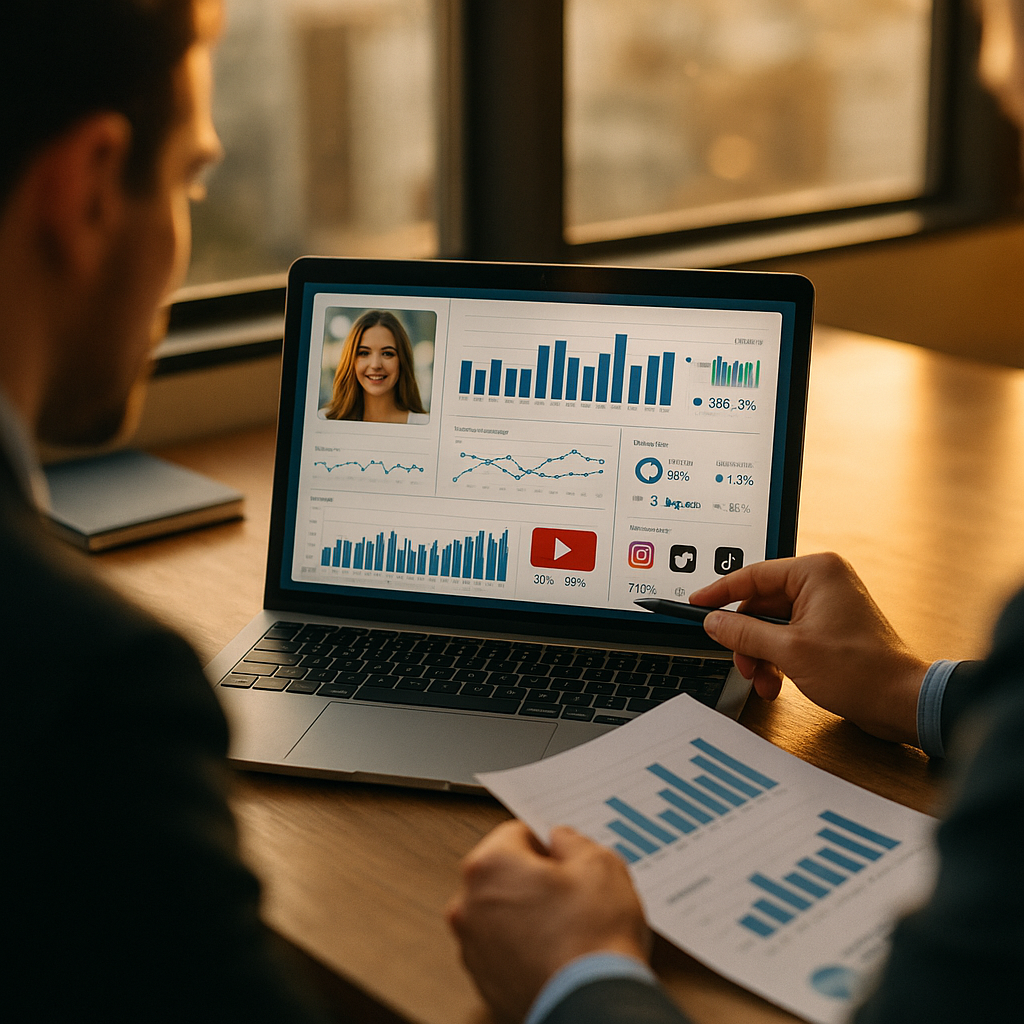Competitive intelligence through influencer partnership analysis offers businesses an unparalleled edge by decoding competitors’ digital strategies. In 2025, evaluating influencer alliances is essential to understand market movements and campaign impact. But how do you turn influencer analysis into actionable competitive intelligence? Let’s explore the best methods to leverage influencer partnerships for sharper business decisions.
Why Influencer Partnership Analysis Matters for Competitive Insights
Marketers today recognize that influencer partnership analysis is a goldmine for gathering competitive insights. By studying which influencers your competitors engage with, and how these relationships perform, you can spot trends, audience preferences, and gaps in your own strategy. Forbes reports that influencer-driven ROI outpaces traditional ads by up to 11 times, making careful observation of these collaborations vital for staying ahead.
Competitors’ influencer choices reveal their target demographics, content preferences, and even key business priorities. For example, if several competitors are investing in eco-conscious micro-influencers, it signals a growing market emphasis on sustainability. Monitoring these relationships goes beyond vanity metrics; it uncovers actionable signals about emerging trends and potential partnership opportunities.
Essential Competitive Intelligence Tools for Influencer Tracking
Effective competitive intelligence solutions must include advanced influencer network analysis tools. Platforms such as Brandwatch, Traackr, and Upfluence now offer real-time social listening and partnership mapping. These tools identify:
- Which influencers are collaborating with your competitors
- The reach and engagement levels of competitor-sponsored content
- Sentiment and brand affinity generated by specific partnerships
- Emerging influencer voices or markets competitors are entering
By leveraging AI-powered analytics, brands can automate monitoring processes and receive alerts when a rival launches a major influencer campaign. In 2025, the integration of natural language processing (NLP) with influencer databases enables deeper understanding of not just who is partnered with whom, but also how authentic and effective the collaborations truly are.
Interpreting Competitor Influencer Strategies
Going beyond surface metrics, competitive intelligence through influencer analysis requires critical interpretation. Ask:
- Is your competitor prioritizing macro- or micro-influencers? Why?
- What platforms are they focusing on—Instagram, TikTok, LinkedIn, or emerging channels?
- Are influencer partners aligned with specific campaigns, product launches, or demographic shifts?
This analysis helps identify your rivals’ go-to-market strategies. For example, a competitor’s frequent campaigns with finance thought leaders on TikTok might signal a shift toward younger, mobile-savvy investors. Or, a sudden surge in collaborations with health and wellness content creators could indicate a new product entering the market. Keep in mind that context, consistency, and influencer-audience fit are more telling than mere follower counts.
Turning Influencer Partnership Insights into Strategic Action
Analyzing competitors’ influencer alliances is just the first step; transforming those insights into business actions sets market leaders apart. Here’s how to execute:
- Benchmark and Identify Gaps: Compare your influencer landscape against competitors. Where are you over- or under-represented?
- Prioritize High-Impact Segments: Focus influencer investments on niches or platforms under-served by competitors, maximizing ROI and visibility.
- Refine Messaging: Use content themes and campaign structures that resonate with high-performing competitor partnerships, but tailor them to your brand’s unique value proposition.
- Test and Iterate: Launch pilot collaborations with emerging influencers identified in your analysis, monitoring engagement and sentiment closely.
Major cosmetic brands, for instance, have demonstrated that pivoting quickly in response to competitor influencer alliances can capture new audiences and stifle rival campaigns. Agility, driven by data, is the cornerstone of success.
Ensuring Credibility and Reliability in Influencer Data
In 2025, EEAT (Experience, Expertise, Authoritativeness, and Trustworthiness) principles are at the core of influencer intelligence. Sound competitive analysis demands:
- Verifiable Data: Use reliable sources and tools with transparent methodology for influencer metrics and campaign performance.
- Comprehensive Context: Include qualitative assessments—such as audience sentiment, authenticity, and influencer reputation—to avoid misreading superficial data spikes.
- Continuous Monitoring: Don’t rely on one-off reports. Ongoing analysis captures competitor pivots and emerging threats in real time.
- Human Oversight: Add expert review to AI-generated data to ensure nuanced interpretation and higher decision confidence.
Brands that consistently apply EEAT-informed practices are better equipped to translate influencer partnership trends into sustainable market advantages.
Shaping the Future: Influencer Intelligence as Core Competitive Strategy
With influencer marketing now a multi-billion dollar industry, integrating influencer intelligence into wider competitive strategies is non-optional. Forward-thinking brands are embedding partnership analysis within their planning cycles, product launches, and crisis management protocols. In 2025, a seamless workflow between sales, marketing, and analytics teams ensures that influencer insights inform everything from creative direction to pricing models.
As AI and data quality continue to advance, expect influencer partnership analysis to deliver even more precise guidance for outmaneuvering competitors. The most successful companies aren’t just tracking who their rivals work with—they’re predicting where competitor partnerships will go next.
FAQs on Competitive Intelligence Through Influencer Partnership Analysis
- Why is influencer partnership analysis considered vital for competitive intelligence in 2025?
It offers real-time visibility into competitor strategies, audience shifts, and campaign effectiveness, enabling proactive adjustments and smarter investment in marketing. - What tools are recommended for influencer partnership tracking?
Tools like Brandwatch, Upfluence, and Traackr provide comprehensive influencer monitoring, sentiment analysis, and competitor benchmarking capabilities. - How often should companies review competitor influencer partnerships?
Regular monitoring—at least monthly—ensures brands quickly identify shifts in competitor tactics and trending influencers or channels. Continuous tracking is optimal for agile response. - How can brands use this intelligence without simply copying competitors?
Use insights to spot market gaps, refine messaging, and identify under-exploited channels, rather than duplicating existing strategies. Focus on authentic, brand-aligned partnerships. - How is influencer authenticity verified in intelligence analysis?
By evaluating engagement quality, audience sentiment, content relevance, and historical campaign performance—supplemented by human expertise beyond AI data.
In summary, mastering competitive intelligence through influencer partnership analysis is essential in 2025 for brands aiming to lead, not follow. Prioritize credible data, agile execution, and continuous learning to transform influencer trends into strategic wins.
